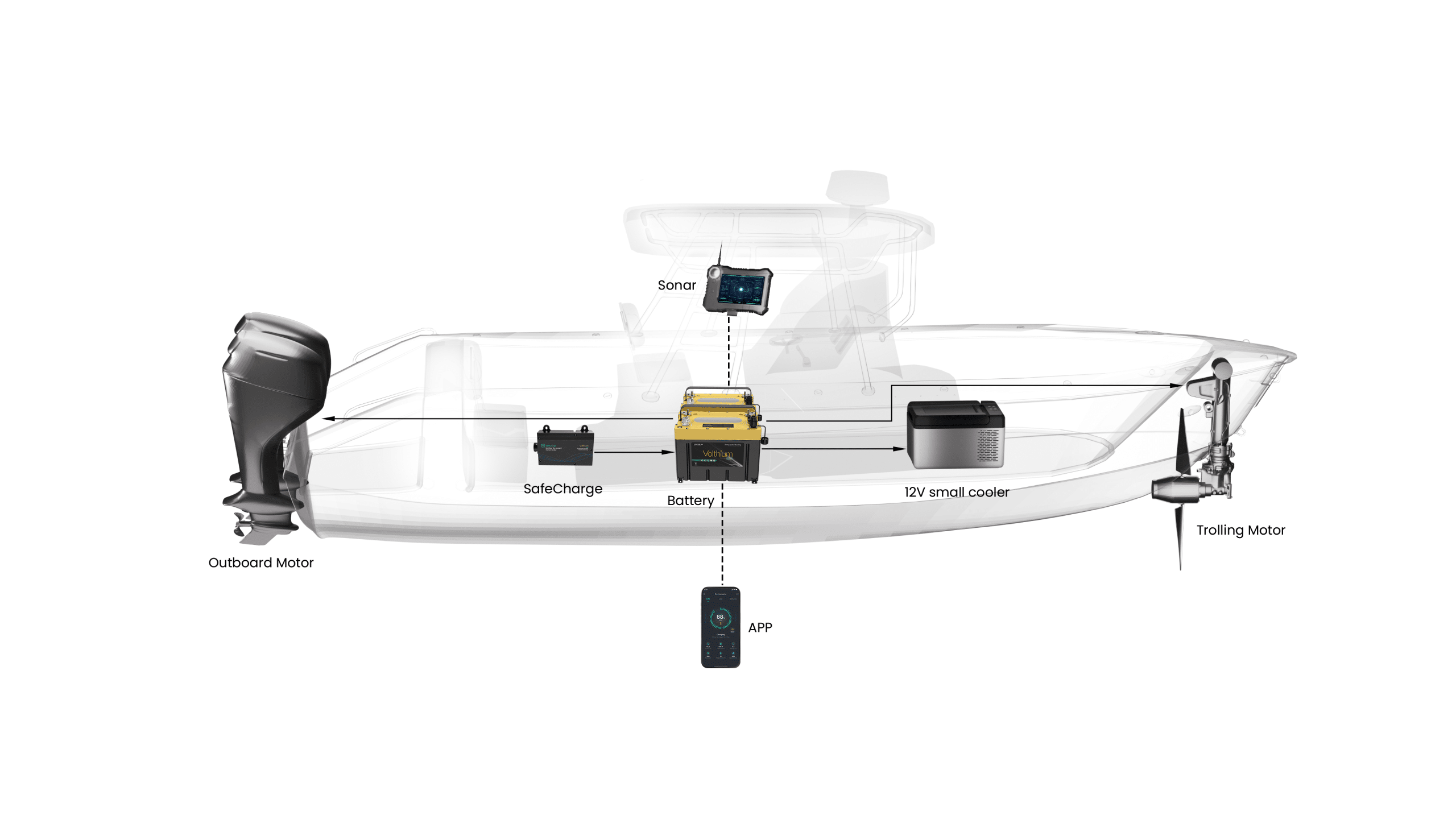Patented SafeCharge™ technology
SafeCharge technology is exclusive and patented by Volthium, revolutionizing the recreational vehicle and boating industries. Thanks to the intelligent management of the load coming from the alternator, it eliminates the need for a DC-DC module or a BIM isolator in your installation!
What is SafeCharge™ technology?
In a traditional lithium battery installation in an RV, boat, or service truck, the batteries are recharged via the current coming from the alternator. This type of configuration requires the addition of a DC-DC charger or a BIM isolator in order to protect both the alternator and the batteries from premature wear.
With our new proprietary, patented SafeCharge™ technology, there is no longer a need to install a DC-DC or BIM, greatly simplifying installation or day-to-day use. With our SafeCharge™ current limiter, it is possible to control the amount of current entering the lithium battery.
In fact, the user or installer can, via our mobile app, define a trigger threshold, which corresponds to the current level at which the regulation begins. It can also determine the maximum amperage allowed by the battery, for example 10A or 20A. In this way, as soon as the current exceeds the defined threshold, the system automatically limits the flow rate, according to the configured parameters.
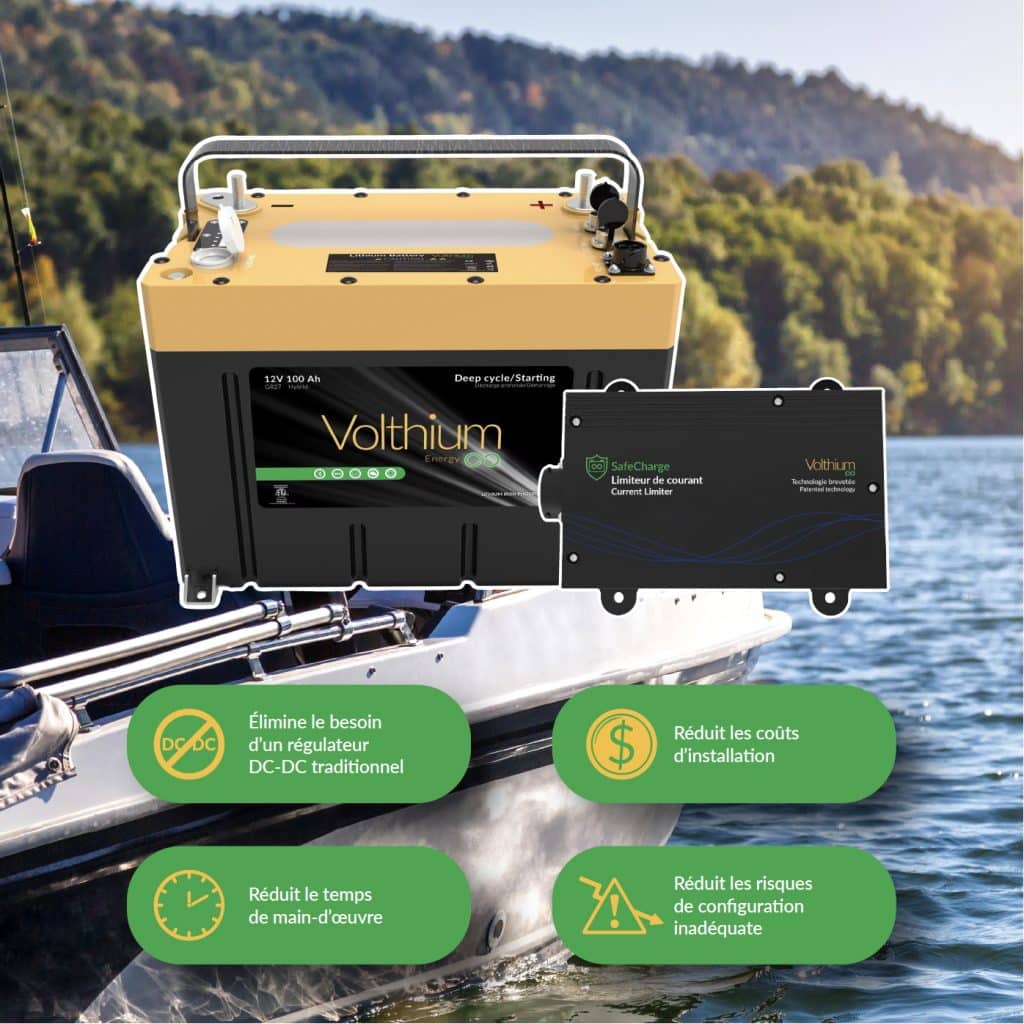
SafeCharge™ technology in a nutshell:
- The combination of the advantages of DC-DC with the advantages of a lithium contactor with algorithm: intense load and idle intermittency (15min/20min)
- Retains the original Boost/Combine function available in campervans
- Allows for a single battery circuit for deep discharge and starting
- Essential for the Class 8 Trucking and Commercial Fishing Industry
SafeCharge™ current regulator compatible batteries
The only two batteries equipped with a BMS compatible with SafeCharge™ technology are Volthium Energy’s 12V 100 Pro 2 and NAPA’s 12V 120Ah. The American automotive giant has chosen to trust Volthium for the development of its brand new range of lithium batteries, which will be marketed from June 2025.
Both models were designed by Volthium to meet the specific needs of recreational vehicles and motorboats. The challenges of installing lithium batteries — whether in terms of cost, time or complexity — were a barrier for our installer and customer partners. Our exclusive SafeCharge™ technology removes these barriers in a revolutionary way.
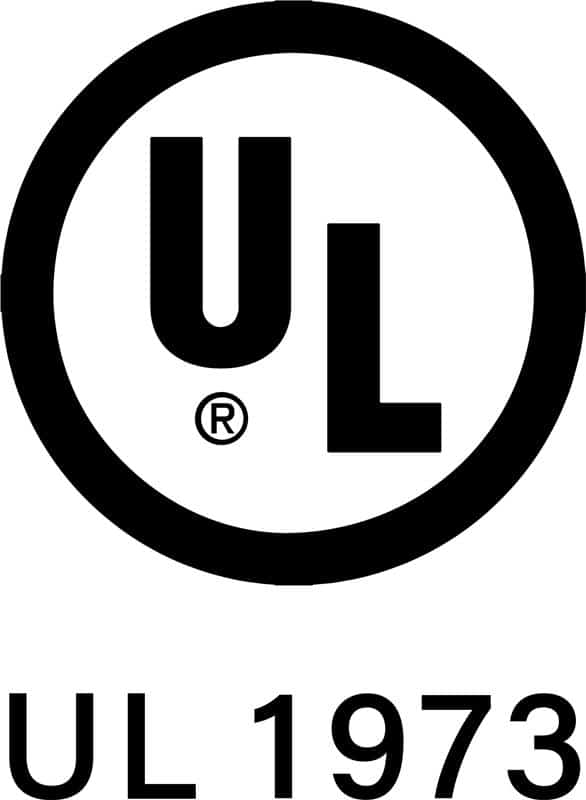
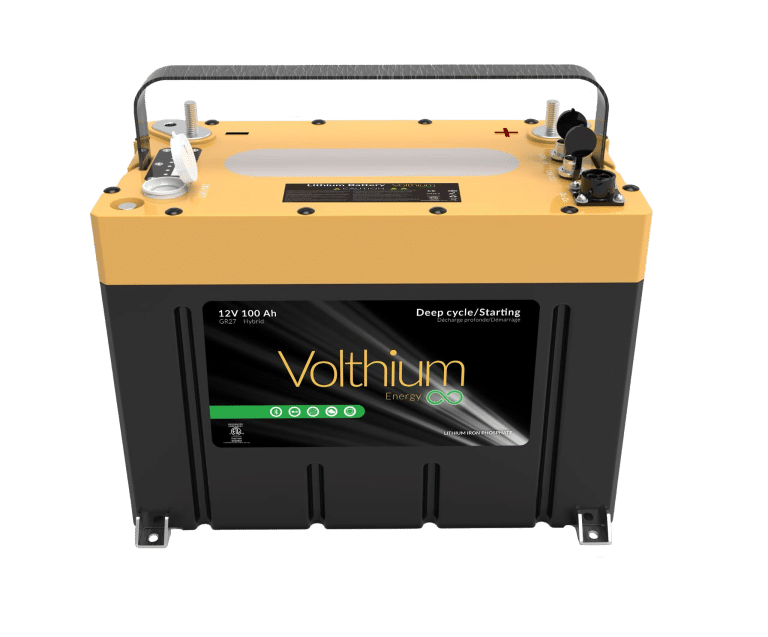
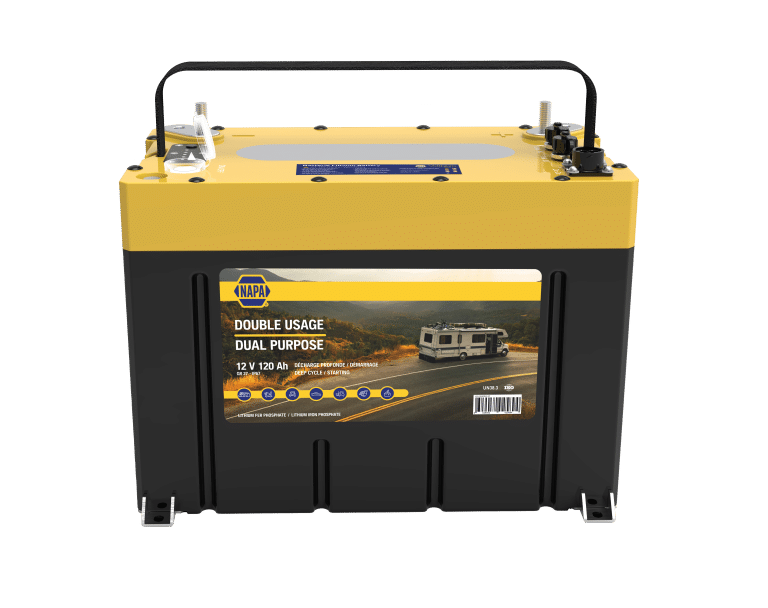
The challenges of a lithium battery installation
In a traditional installation with lithium batteries, it happens that in some cases, the alternator overheats due to the too much current that LFP lithium batteries are able to absorb compared to an AGM battery, thus requiring too much work from the alternator.
But it doesn’t stop there, hundreds of cases of blown fuses, overheated wiring or damaged contactors are reported every year, both by users and by professional installers.
To avoid these problems, the integration of lithium LiFePO4 batteries requires the addition of the right accessories, as well as a revision of the wiring strategy, initially designed for lead-acid or AGM batteries.
DC-DC charger, a limited option
The DC-DC charger is an accessory usually used to regulate direct current. This relatively expensive device has two main functions:
1. Regulate the amount of current coming from the alternator and going to the deep cycle batteries. The choice of DC-DC charger depends on the power of the alternator and the gauge of the cables used to carry the current.
- This limits the overheating of the wiring and alternator.
- We solve the problems of blowing fuses and circuit breakers that trip repeatedly.
2. Prevent current from flowing from the deep cycle batteries to the engine starter battery.
While this can sometimes be an advantage, it can be a problem in other configurations, especially for watercraft owners.
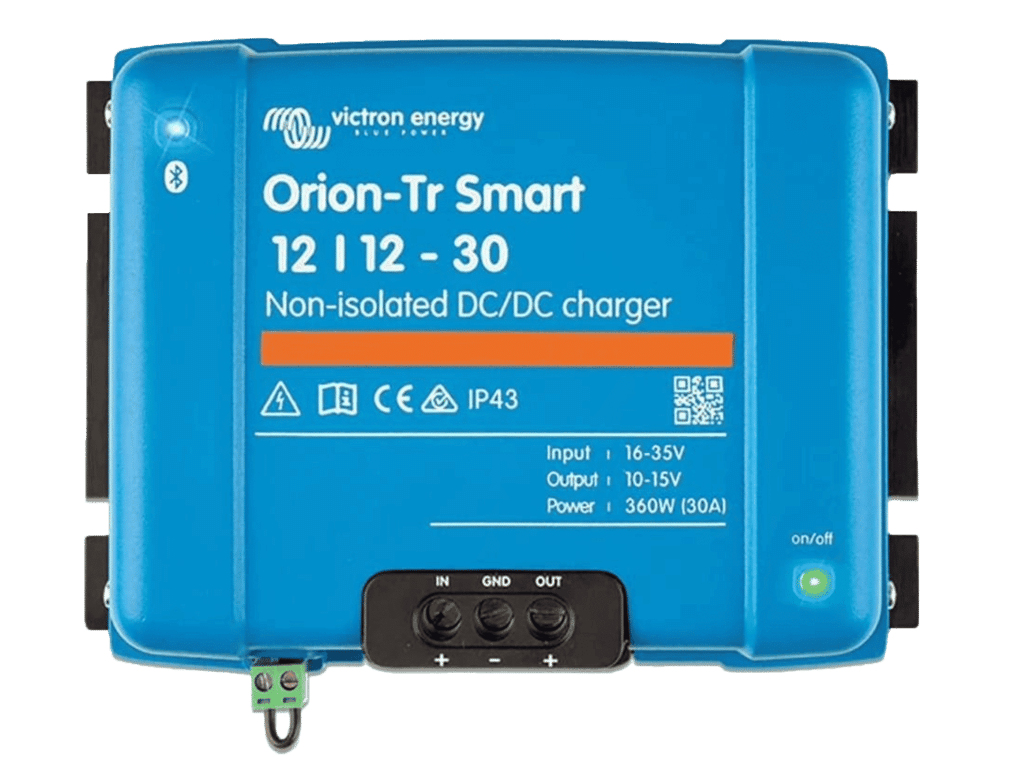
SafeCharge™ Technology Revolutionizes the Industry
SafeCharge™ technology enables easy, fast and cost-effective integration of lithium batteries.
The major change: from now on, it is no longer necessary to add a DC-DC, a costly manoeuvre, both in terms of equipment and installation time.
Another advantage, particularly appreciated by boat owners, is that the use of the SafeCharge™ current regulator allows the engine to be started with a dual-purpose battery such as the Volthium 12V 100Ah Pro 2 or the NAPA 12V 120Ah . This would not be possible with a DC-DC because it prevents current from flowing from the dual-purpose battery to the engine, a function that is essential to provide the energy needed for starting.
The SafeCharge™ Controller This alone avoids a number of potential problems: overheating of the alternator, wiring failures and unintentional tripping of circuit breakers. It adapts perfectly to the electrical characteristics of the boat or vehicle in which it is integrated.
SafeCharge™, Volthium's simplicity
Eagerly awaited by motor vehicle owners, SafeCharge™ technology finally makes it possible to integrate lithium batteries into existing electrical systems in a simplified and safe way.
Its advantages are undeniable:
- Eliminates the need for a traditional DC-DC regulator
- Reduces installation costs
- Reduces labor time
- Reduces the risk of misconfiguration.
It does all this while effectively protecting against current overloads!
For the time-sensitive user, the ease of installation of batteries incorporating SafeCharge™ technology is another interesting advantage, as access to a certified technician is not always guaranteed at the desired time, especially during peak periods. We see it every year: motivated by milder weather, caravanners and boaters all want to have their equipment installed at the same time, especially in the spring.
A true innovation, the SafeCharge™ controller represents a ready-to-use solution, developed to meet the needs of all those who want to optimize their electrical system without compromising on safety or performance.
By bringing this novelty to market, Volthium, true to its mission, is making the transition to lithium more accessible, more reliable and better adapted to today’s realities.
